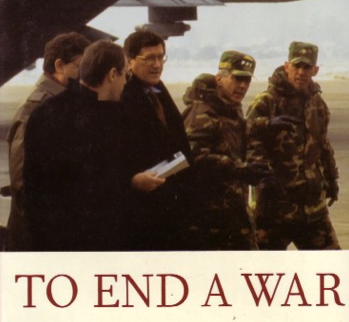With Richard Holbrooke’s passing, there’s a great deal of discussion about the General Framework Agreement for Peace in Bosnian and Herzegovina, better known as the Dayton Accords.
Given the fact that the peace has held for over 15 years, most people don’t realize the Accords had two major flaws built into them. First, the Dayton Accords did not actually settle the identity of the Bosnian state–the very reason for the bloody civil war! Rather, it created a weak multi-ethnic confederation, with two roughly equal mini-states: the Bosnian-Croat Federation and Republika Srpska. Second, it was largely negotiated by proxy– for example, the president of Serbia (Milosevic) represented the Bosnian Serbs, not Radovan Karadizc (political leader of the Bosnian Serbs). Most of the aggrieved parties were not directly negotiating with each other.
Still, it worked. The fragile agreement held. And in so doing, it gave breathing space for the slow process of transformation/nation building to occur over the past decade and a half — a transition that was helped along by a stabilizing peacekeeping force, a pursuit of justice for war crimes, and heavy investments in economic development.
With Amb. Holbrooke’s reported last words, it is tempting to try to apply these kinds of lessons to Afghanistan. What do you think? Does this kind of model at all fit for Afghanistan? I’m tempted to think no, not least for the fact that a significant number of insurgents are motivated by the simple fact of foreign occupation. So long as foreign fighters are there, the insurgents will keep up the fight.
What do you think? Could any lessons of Dayton be applied to Afghanistan?
